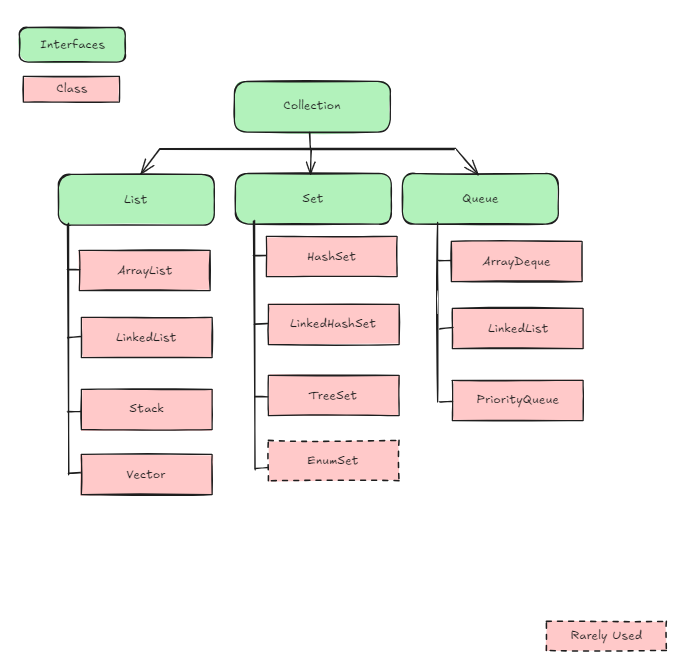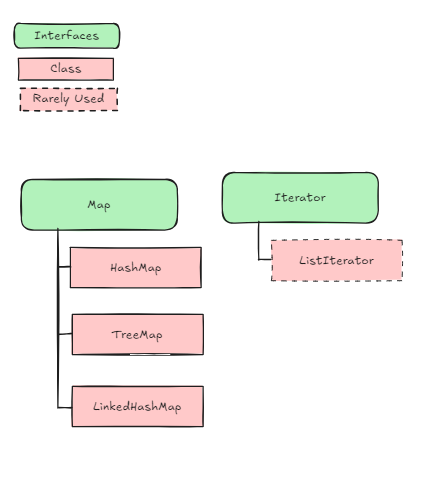Collection Framework in JAVA
 SUHAS N H
SUHAS N H


Introduction
The Collection Interface in Java is like a blueprint for a group of objects. It defines the basic operations that can be performed on a group of elements, such as adding, removing, and checking if an element exists in the collection.
Key Points:
Part of Java's Collection Framework: The Collection interface is part of Java's Collection Framework, which provides standard ways to work with groups of objects.
Common Operations:
Add Elements: You can add elements to the collection.
Remove Elements: You can remove elements from the collection.
Check Size: You can find out how many elements are in the collection.
Check if Empty: You can check if the collection is empty.
Iterate: You can loop through the elements in the collection.
Implemented by Other Classes: The Collection interface itself doesn’t store any data or provide detailed implementations of these operations. Instead, it’s implemented by other classes like
ArrayList,HashSet, andLinkedList, which provide the actual storage and behavior.Generic: The Collection interface is generic, meaning you can specify the type of elements it will hold. For example,
Collection<String>holds a collection of strings.
Example in Action:
If you imagine a collection as a basket, the Collection interface is like a rulebook that says what you can do with the basket (add items, remove items, check how many items are there, etc.). Different types of baskets (like ArrayList, HashSet) follow these rules but may store and manage the items differently.
So, the Collection interface helps ensure that no matter what type of "basket" you use, you can always rely on these basic operations being available.
Subscribe to my newsletter
Read articles from SUHAS N H directly inside your inbox. Subscribe to the newsletter, and don't miss out.
Written by
